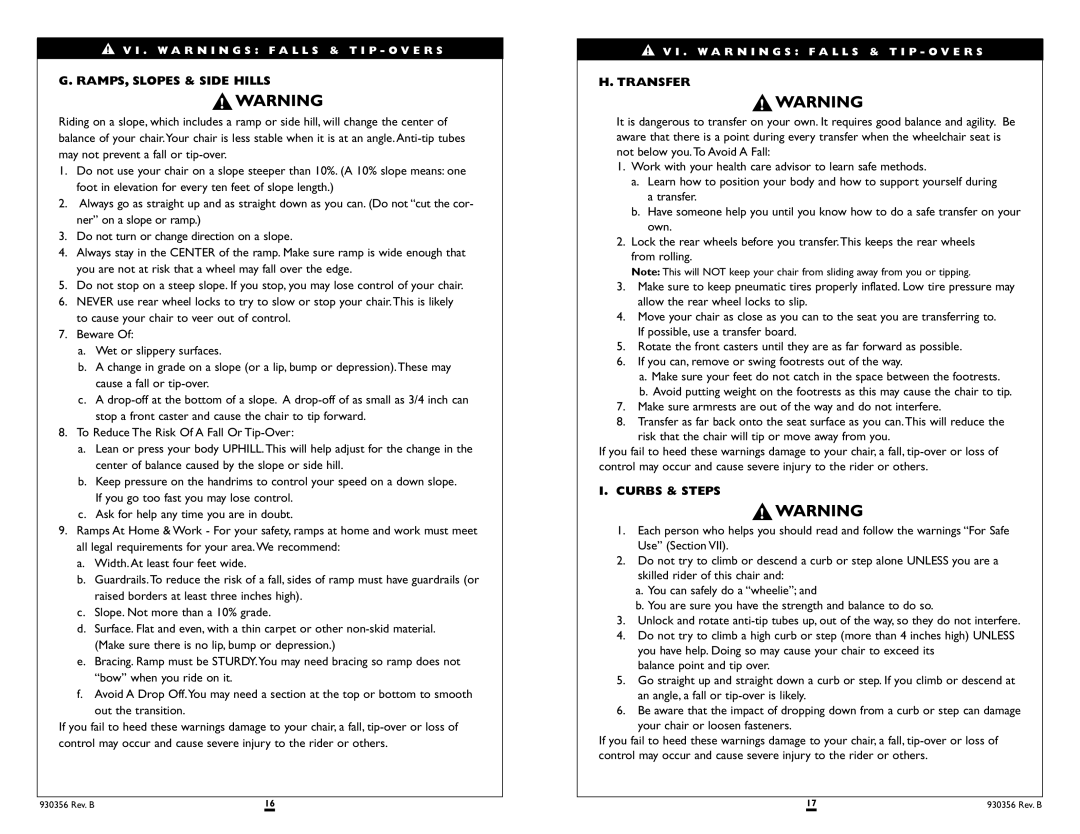T45 specifications
The Sunrise Medical T45 is a cutting-edge power wheelchair designed to enhance mobility and independence for individuals requiring advanced assistive technology. As a product of Sunrise Medical, a company renowned for its commitment to quality and innovation, the T45 embodies several key features, technologies, and characteristics that set it apart in the competitive market of mobility solutions.One of the primary features of the T45 is its compact and sleek design, which allows for exceptional maneuverability in tight spaces. The wheelchair employs a small turning radius, making it ideal for indoor environments such as homes, offices, and other confined areas. This agility is complemented by robust suspension systems designed to ensure a smooth ride over various terrains, providing users with both comfort and stability.
Another standout characteristic of the T45 is its advanced seating system. The wheelchair offers a variety of seating options, including custom cushions and backrests that promote optimal posture and pressure relief. The seating system is fully adjustable, enabling users to personalize their seating position based on their specific needs. This focus on personalization enhances the overall user experience and supports long-term comfort.
The T45 is equipped with state-of-the-art control technologies, featuring intuitive joystick controls that are easy to operate for users of all skill levels. The joystick interface is complemented by programmable settings that allow users to customize speed and acceleration based on their preferences. In addition, the T45 is compatible with various assistive devices, expanding its usability for individuals with different mobility challenges.
Further enhancing its capabilities, the T45 incorporates advanced battery technologies that provide an extended range of operation. Users can expect a remarkable performance on a single charge, allowing for longer outings without the worry of running out of power. The wheelchair's intelligent battery management system also ensures optimal charging and longevity.
Safety features are another critical aspect of the T45’s design. The wheelchair includes robust anti-tip mechanisms and reflective elements for enhanced visibility, ensuring that users can navigate safely both indoors and outdoors. With these technologies, users can enjoy greater freedom and confidence in their mobility choices.
In summary, the Sunrise Medical T45 power wheelchair combines innovative design, customizable comfort, advanced control, and essential safety features to meet the diverse needs of individuals seeking mobility solutions. Whether for daily living or special outings, the T45 stands out as a reliable companion that promotes independence and quality of life for its users.

